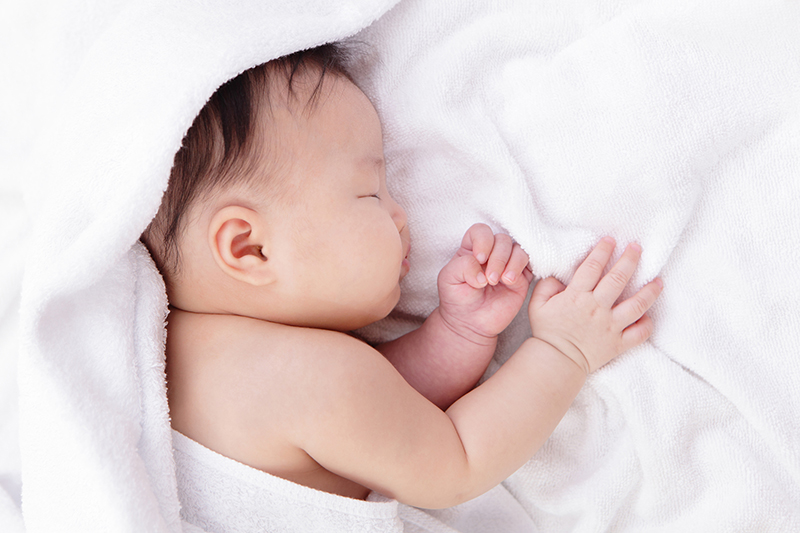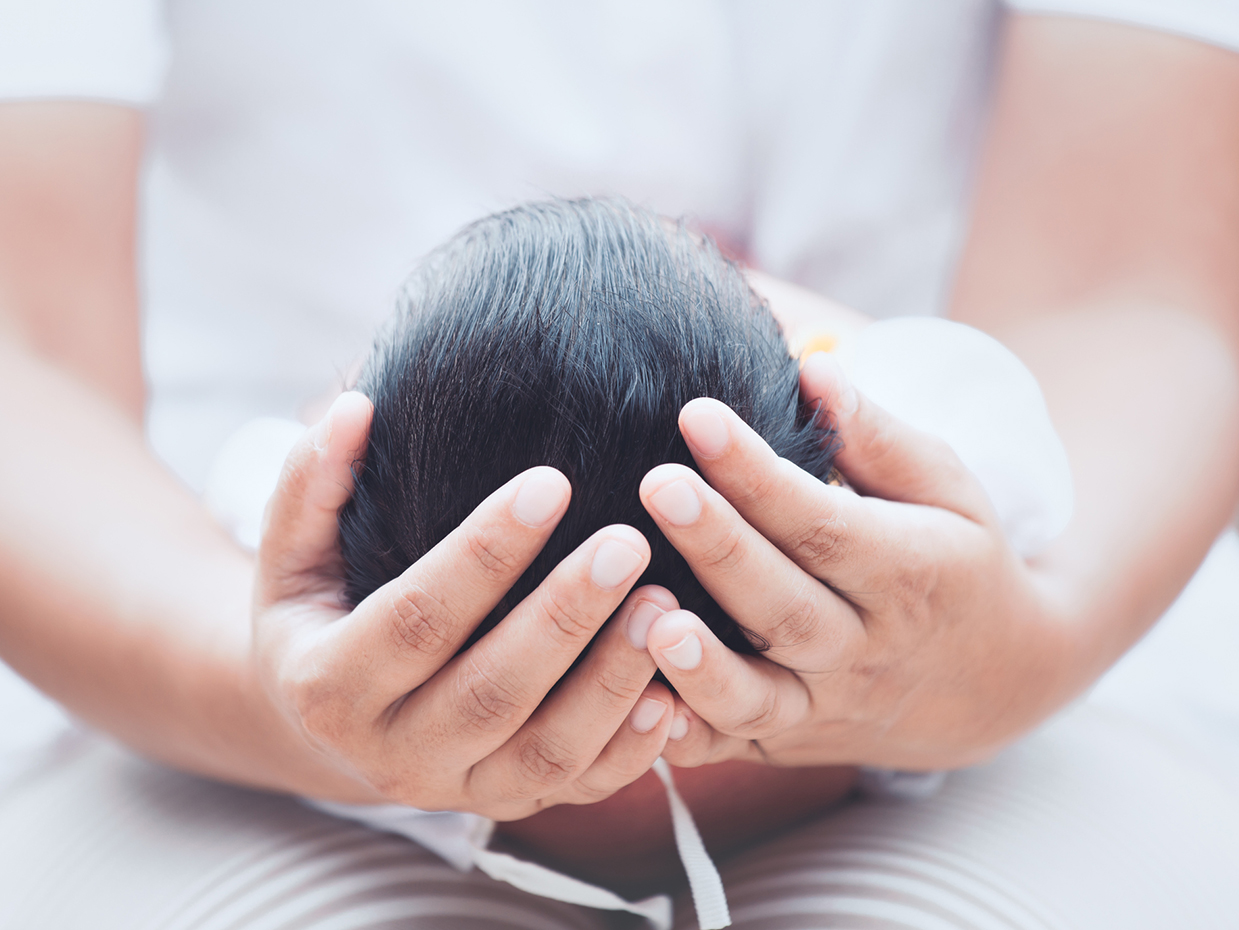Families For Life | Independent Sleep and Your Baby-Newborn

If your baby can sleep and settle without your help, it’s called independent sleep. When babies learn to sleep independently in the first 3-4 months of life, it can help you avoid settling and waking problems later on.
About independent sleep
Independent sleep is when babies can sleep for 6-8 hours during the night. An independent sleeper can also settle back to sleep without crying and needing a parent’s help to resettle after waking in the night.
Around 60% of babies can do this by six months of age. When children get plenty of affection and attention from parents during the day, there’s no evidence that independent sleep is bad for them.
There are some simple things you can do to help your baby become an independent sleeper – when your baby is developmentally mature enough.
Independent sleep: is it right for your baby and family?
Your newborn’s biological sleep clock is programmed so she wakes at night. This ensures she gets enough food for growth and development. This means your newborn needs you during the night for feeding and settling for at least the first 3-4 months.
Some families want older babies (aged 6-12 months) to settle quickly and sleep during the night without needing help to resettle after waking. Other families prefer to give their babies help to settle during the night.
There’s no right and wrong way to do things – it’s depends on what’s best for your child and family. It’s a decision only you can make.
Three key strategies for independent sleep
There are three things you can start doing in the first 3-4 months of your baby’s life to get your baby ready for independent sleep:
Emphasise the difference between night and day
Put your baby to bed drowsy but awake
Start a feed, play, sleep routine
Your newborn’s sleep patterns and rhythms mature rapidly in the first 3-4 months. This makes it a good time to gradually introduce these three key strategies. But flexibility is also important in these months. It’s OK if your baby sometimes falls asleep while he’s feeding. It’s also fine to cuddle or rock your baby to sleep if he’s very unsettled.
Strategy 1: emphasise the difference between night and day
Your baby doesn’t understand the difference between day and night. It’s quite common for babies to be wide awake during the night and then sleepy during the day.
Here’s how to help your baby make the eventual adjustment to more sleep at night-time:
During the night, keep your baby’s room as dark and quiet as possible (babies don’t need total dark or quiet to sleep).
Use a dim light when you need to attend to your baby during the night – try not to turn on a bright overhead light.
At night, respond to your baby’s cries quickly, and settle or feed her as soon as you can. You might also want to give night feeds in her room – this will help keep these feeds brief and make them different from daytime feeds.
At night try to be soothing and quiet when you’re with your baby. Try to keep play for daytime.
From three months on, try to make a quiet, dark place for your baby to nap during the day. Babies become more awake and alert as they get older, so they don’t sleep as well in noisy, bright areas like the family room.
Strategy 2: put your baby to bed drowsy but awake
Try to put your baby to bed drowsy but awake in the first 3-4 months. This will help your baby develop sleep associations that don’t rely on you for comfort and settling in the middle of the night.
If you put your baby to bed drowsy but awake, he’ll associate the cot (rather than you) with going to sleep. When he no longer needs feeding during the night, he won’t need your help in getting back to sleep after waking.
But if your baby usually goes to sleep by being rocked in your arms or fed to sleep, that’s what she’ll expect when she wakes in the night. And babies can wake as often as every 40 minutes.
Or if your baby often falls asleep in the family room and wakes up in his cot, he’ll wonder how that happened – and the surprise might make him upset and cry out for you.
Teaching your baby to self-soothe
Self-soothing is when your baby can calm down, relax and go to sleep again in her bed. Babies who can self-soothe sleep for longer periods and have longer total sleep times at night.
The best thing you can do to teach your baby to self-soothe is to put him into bed drowsy but awake. This gives him the chance to associate bed with sleep and learn how to self-soothe.
If you routinely feed, cuddle, walk or rock your baby to sleep, you’re doing the soothing for your baby. This means she doesn’t need to learn to self-soothe.
Settling baby in the cot
A few ideas might help you settle your baby in the cot:
Give your baby some time to settle and self-soothe. Avoid picking up your child as soon as he cries. It’s normal for babies to cry when you first put them into the cot.
As your baby gets older, give her some time to settle and self-soothe if she cries when she wakes during the night – she might re-settle without your help. If you hear real crying, you might need to help her settle.
Try the patting settling technique. The advantage of patting over cuddling is that your baby is still going to sleep in the cot. Ideally, you stop patting when your baby has calmed down, but just before sleep comes.
‘Sleep associations’ are the routines, habits and patterns that we connect with feeling sleepy. Sleep associations help us go to sleep. They also help us go back to sleep when we naturally wake during the night.
Strategy 3: start a feed, play, sleep routine
When it feels right for you, it can help to start doing things in a similar order each day – feed, play, sleep. A consistent routine like this will help your baby settle into a regular sleep pattern.
So when your baby wakes up, a routine might be to:
offer him a feed
change his nappy
take time for talk and play
put him back down for sleep when he shows tired signs.
With a newborn, it’s good to be flexible about feeding and sleep times – but it can still help to start doing things in a similar order.
More ideas to encourage independent sleep
Managing daytime sleep
Little babies need daytime sleep, because they get tired after around 10-20 minutes of play or interaction. Your baby’s tired signs will tell you when she needs a rest.
To get your baby in the habit of having a long sleep at night, avoid letting your baby sleep for more than four hours at a time during the day. But limiting your baby’s sleep too much during the day can make him overtired. A tired baby often finds it harder to get to sleep.
Feeding and sleep
Generally, newborns need to be fed every 2-4 hours. Your baby will sleep better after a good feed.
If your baby has been fed in the last two hours and still can’t sleep, give her a little bit of time to settle. If sleep doesn’t come, an extra cuddle before putting her back in the cot might help. You could also try topping your baby up with another feed.
Some parents find that a rollover feed – a late feed somewhere between 10 pm and midnight – helps babies sleep for longer towards morning.
Phasing out night-time feeds
From six months of age, if your baby is developing well, it’s OK to think about night weaning for breastfed babies and phasing out night feeds for bottle-fed babies. On the other hand, if you’re comfortable with feeding your baby during the night, there’s no hurry to phase out night feeds.
You can choose what works best for you and your baby.
If you decide to continue with night-time feeds, you can still practise putting your baby to bed drowsy but awake, and keeping your night-time interactions warm but low-key. This will make it easier to wean your baby from night feeds when the time is right for you both.
© raisingchildren.net.au, translated and adapted with permission
Explore more

DID YOU KNOW?
Cradle cap is the oily, scaly crust that babies sometimes get on their scalps, in their body folds and on their torsos. Although cradle cap looks uncomfortable, it doesn’t usually bother your baby.
READ MORE